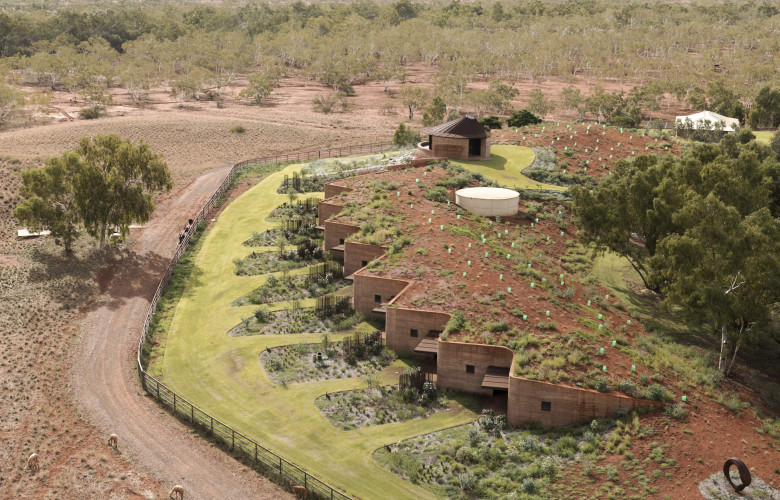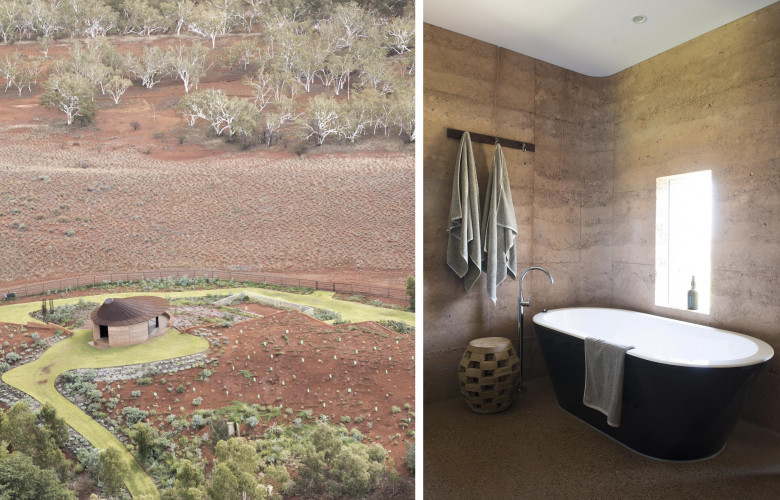Musterers' Quarters wins global architecture prize
Contact
Musterers' Quarters wins global architecture prize
The Great Wall of Western Australia has won a Terra Award, an international prize for earthen architecture.
Luigi Rosselli's The Great Wall of Western Australia has won the collective housing category of the Terra Awards, the first international award for earthen architecture.
The building
The project, also known as the Musterers' Quarters, is located on a remote cattle station in North Western Australia, in a rugged, dry landscape. The conditions presented a unique set of design parameters for a project intended to accommodate workers during cattle mustering periods.
The client required twelve compact, low-maintenance, energy-efficient rooms.
The Musterers’ Quarters have been built into a sand dune that arches around the back of the existing cattle station homestead. A continuous rammed earth wall cuts a saw-tooth face into the dune.
The design represents a new approach to the North Western Australian architecture, moving away from thin, corrugated metal shelters, to naturally cooled earth architecture.
An aerial view of the surrounding landscape and the zigzagging wall is reminiscent of traditional aboriginal paintings. The wall is the longest rammed-earth wall in the world.
On the highest point is a small chapel designed to reflect the sacredness of the site, from the original indigenous caretakers, to the place where headstones mark graves of the first settlers. The chapel is also a meeting point, a place for meditation place, and a lookout.
The chapel is a simple, oval, rammed-earth construction, with a skewed, conical, steel roof.
The cone apex is truncated at an oculus, and provides a solar meridian on the floor. A gold anodised aluminium ceiling and a sacred verse inscribed on the ring beam of the roof are subtle spiritual elements, but do not rival the innate spirituality of the landscape.
The awards
The Terra awards have been developed to allow professionals and the public to gain greater understanding of and appreciation for earth as a building material.
The Terra Awards’ Website states, “Earth is becoming increasingly popular in contemporary architecture: hundreds of projects of high aesthetic and technical quality are emerging across five continents. This material, which has low embodied energy, is readily available and appropriate for participatory buildings. It could help provide a solution to the needs for ecological and economical housing.”
2012 Pritzker winner, Wang Shu, is president of this year’s Terra Award.
The trophies were presented in Lyon on 14 July.
Read also:
Studio Mumbai's MPavilion built from bamboo, earth and rope
Pritzker winner aims for socially engaged architecture








